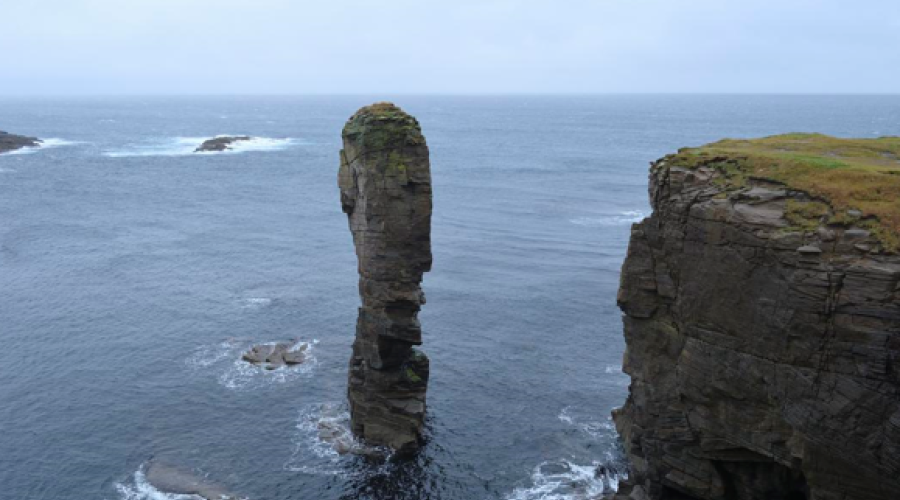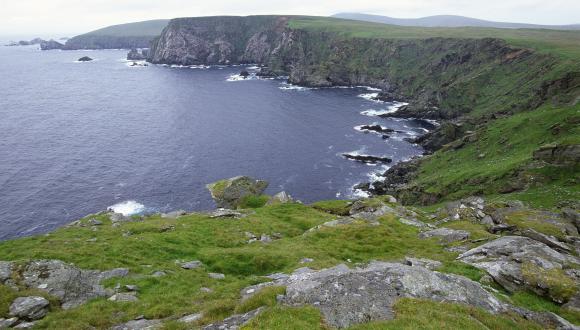
Local heroes
16 January 2023
Orkney Council Museum’s team leader, Nick Hewitt, is adept at dealing with museum challenges which have a strong military element. He joined the Council last year after eight years working with The National Museum of the Royal Navy, and previously worked as Historian for the Imperial War Museum in London.
Nick’s new remit is as wide as it is varied, and includes Orkney Museum, St Magnus’ Cathedral, and Scapa Flow Museum. Recently he has been putting the finishing touches to a project which was delighted to be able to tap into ERDF Natural and Cultural Heritage Funding (NCHF).
Hoy’s Scapa Flow Museum restoration and development is just one arm of a large suite of Orkney projects that seek to improve the access to heritage sites across the smaller islands of the Orkney archipelago.
Scapa Flow Museum’s role is largely, but not exclusively, to chart Orkney’s military involvement in the First and Second World Wars. It is home to artefacts of national and international importance, and the refurbishment of the historic pumphouse allied to the creation of a state of the art extension, complete with light and airy link corridor, is a significant improvement in the visitor experience.
You might have caught sight of the new museum in a recent chapter of BBC televisions ‘Who Do You Think You Are’, when actor Ralf Little discovered more about his family history and a connection to the area’s military past.
Like many projects over the last two years or so the dual challenge of restrictions around Covid-19 and material shortages exacerbated by Brexit were a major headache that had to be tackled. It’s testimony to the creativity and expertise of various contractors as well as the team behind Scapa Flow that a soft launch of the new facilities was possible on July 2 of this year.
Nick is delighted with how well received the refurbished museum has been. “We have had phenomenally good feedback,” he explains, “with over 1,000 visitors per week which is tremendous. What we have here is essentially a 50/50 a restoration of the historic listed pump house building and a new build extension. Now we can display more of the museum’s fantastic collection including some fascinating artefacts that were simply too fragile to be displayed in the pump house, such as archival items and textile materials.
“The pump house itself can now display its own remarkable story and with a new roof we are better placed to welcome visitors than ever before. The exhibition area is less cluttered and visitors will be better able to absorb the items on display. And for staff we have a far better working environment. People like Jude, our visitor services officer, has worked here for 12 years and worked throughout in an environment that was at times both cold and damp, having the new facility will make a welcome change.”
The residents of Hoy, the local press, volunteers and nearby primary school have all been highly supportive too. The volunteers displayed considerable determination, given that there were times when the pandemic severely impinged on what they could do to help. Ultimately, as restrictions eased, they helped with vital and delicate tasks like packing and storing materials before the works could begin. The children benefitted from an junior curators programme run by the imaginative team at Scapa Flow.
Nick takes up the story, “Things like the written instructions for our virtual reality pod were written by the primary school children, and the connection they made with our Arts and Exhibition Officers, as well as Curators was a fantastic local experience. I’m delighted that the children were very much part and parcel of the soft opening back in July, and I’m sure they will feel a connection with their museum in the future.”
The NCHF monies were spent on a range of elements in and around the museum. Before visitors even set foot in the new facilities they will appreciate the landscaping of surrounding grounds, better outdoor lighting, installation of bench seating, removal of old rail tracks, core path improvements and the swish new all abilities access door.
Once inside the museum visitors will surely revel in the exhibition redesigns, and enjoy what were previously stored collections. There will ultimately be a chance to enjoy seeing famous old guns, two of only five First World War German naval guns surviving in the UK. Previously displayed outside they were removed, taken indoors and are being completely refurbished. Nick is delighted that they will be on permanent display inside, never again to be subjected to harsh external elements.
Even beyond the Scapa Flow Museum the story is being told in a bolder and better fashion. Displays around approaches to the ferry terminal are complete, and at Houton Bay and Lyness there are new display panels as at the Visitor Centre at Scapa Bay itself.
Scapa Bay is a name writ large in Scottish history. The scuttling of German warships here in 1919 and the sinking of the Royal Oak in 1939 are two of the most famous naval incidents to occur around the waters of Scotland. I read a quote once which said “You have to know the past to understand the present.” That’s arguably why projects like that at Scapa Flow are so important.
Notes:
The Natural & Cultural Heritage Fund is part of the Scottish Government’s current European Regional Development Fund (ERDF) programme, which runs through to 2023. This is one of two ERDF Strategic Interventions led by NatureScot – the other is the Green Infrastructure Fund.
You can follow the European Structural Funds blog for ESF activities, news and updates. For twitter updates go to @scotgovESIF or use the hashtags #ERDF and #europeanstructuralfunds

The Scottish Government is the Managing Authority for the European Structural Funds 2014-20 Programme. For further information, visit their website or follow @scotgovESIF.






